A crochet table runner that’s functional and stylish
Create a cozy space in your home with this crochet table runner. This pattern is beginner friendly.
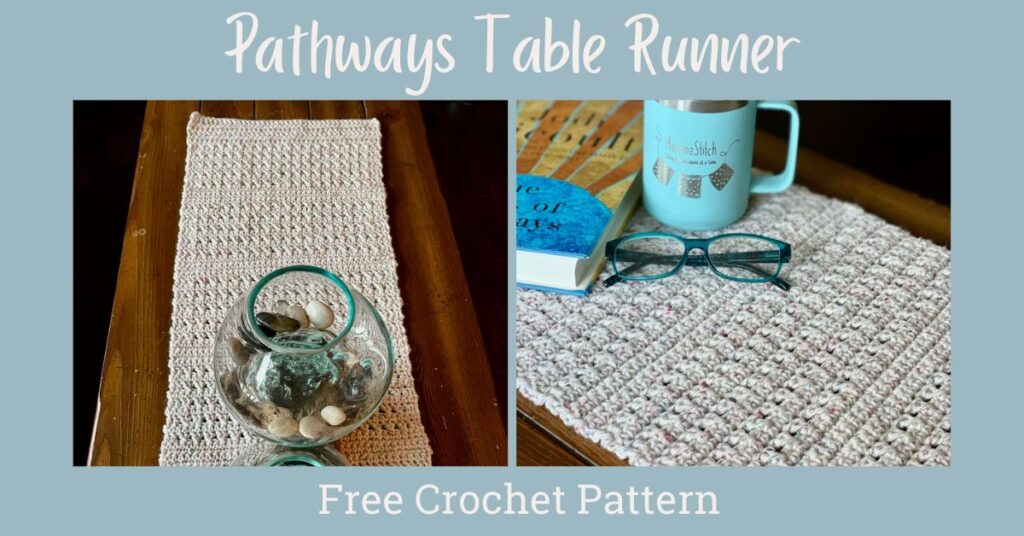
This post contains affiliate links. That means, if you purchase something using the link, I receive a small commission. You don’t pay any extra and your information is safe. Thanks for supporting my small business.
For many years, I’ve ignored table tops in my home. Admittedly, I’m not much for interior design that looks staged. Instead, I focus on creating a look that’s comfortable and lived in.
I do have a tablecloth on the dining table because it’s an heirloom with a surface that shows its years of use. But, my living room coffee table has been sadly bare for all of the years we’ve owned it.
I decided to make a simple crochet table runner for my oblong, rectangular coffee table to bring a more cohesive look to my living room. I’m thrilled to share it with you!
Design + Construction of the crochet table runner
This crochet table runner is the latest in the Pathways collection that includes a spa set and a market bag. Each of the designs in this collection features alternating sections of solid single crochet and open sections of crossed double crochet.
The crossed double crochet has become one of my favorite stitches. It’s simple and creates a subtle texture that contrasts nicely with the solid single crochet sections in the table runner.
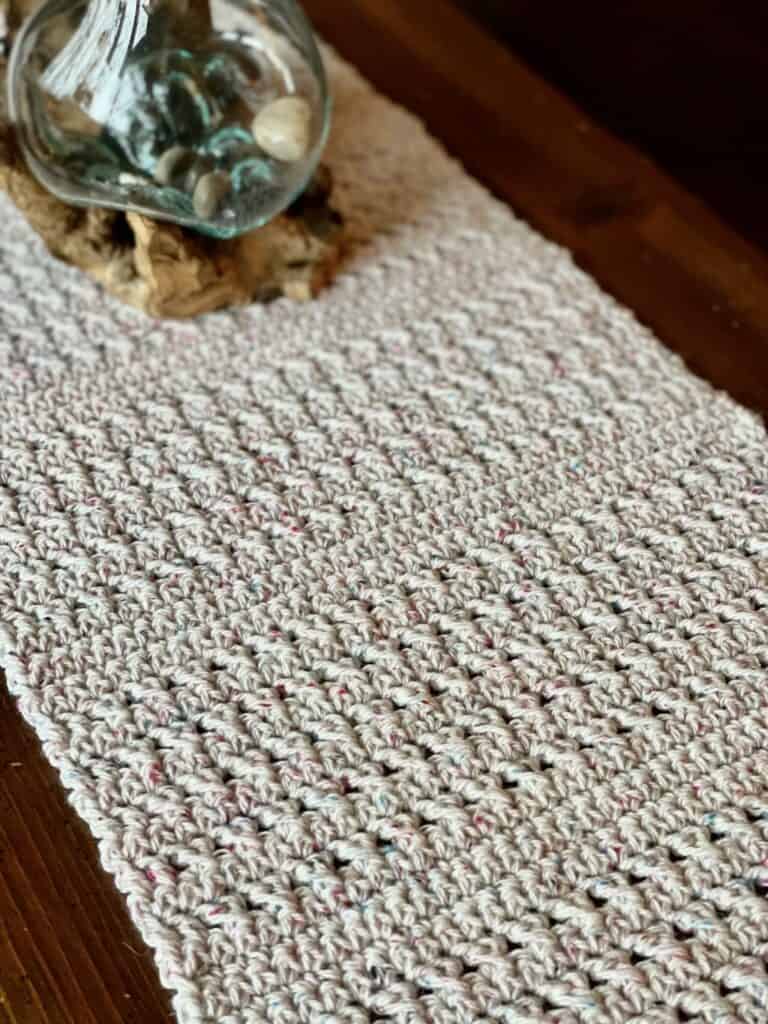
Using it in this crochet table runner means the tabletop surface still has plenty of coverage and protection, even with the slightly openwork look the stitch gives the piece.
The crochet table runner is a long rectangle worked in one piece. In the PDF, I’ve provided instructions that will help you customize the crochet table runner to the size of whatever tabletop it will cover.
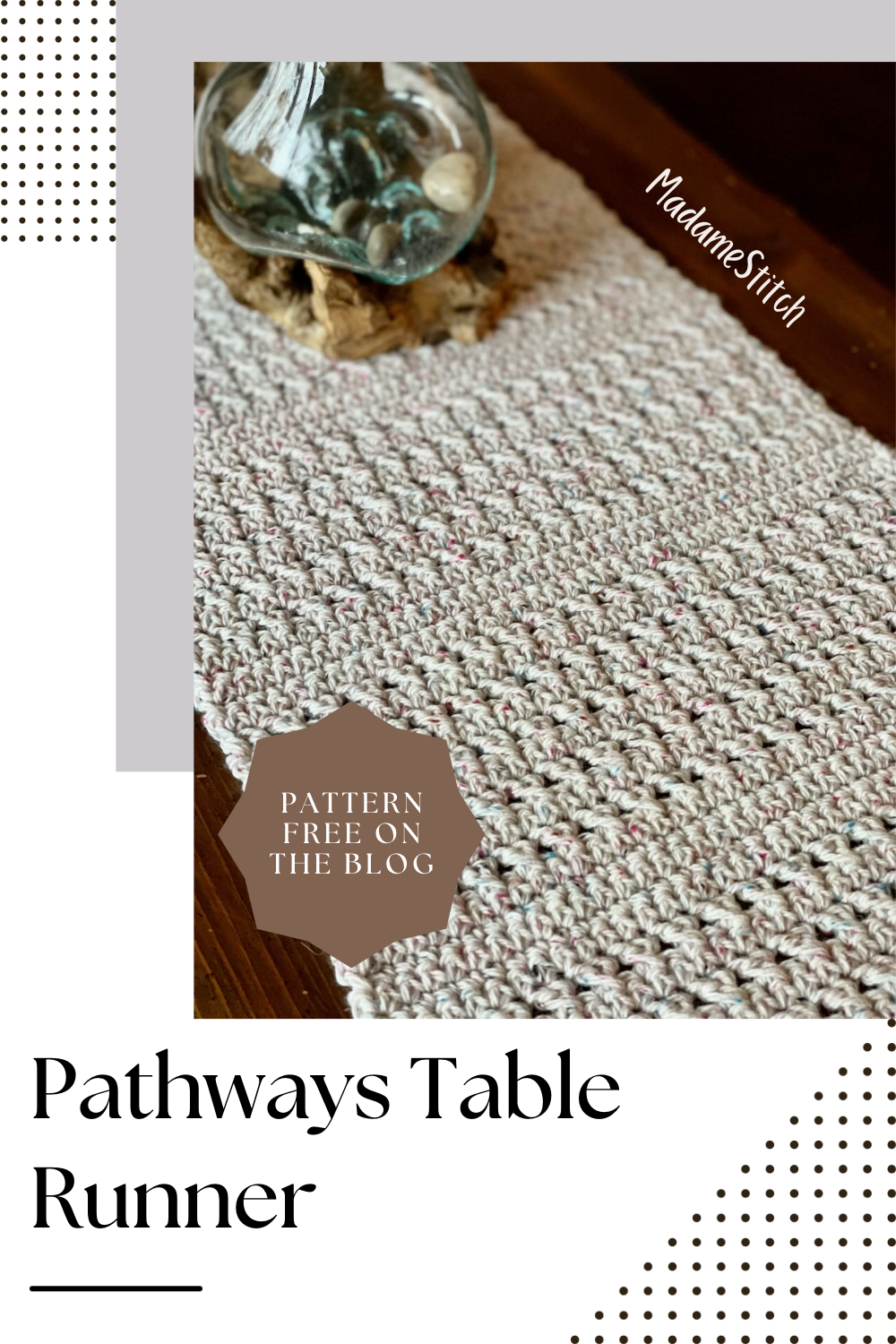
The Yarn
I chose Lion Brand “Re-Tweed” yarn for this crochet table runner. It’s a worsted weight wool, polyester, acrylic blend that has stability to it but isn’t stiff. I love the rustic, slightly tweed look of the yarn. The combination of the nubby texture and the crossed double crochet stitches means you’ll have loads of texture while still having a smooth surface that cause objects set on top of it to tip over.
Any worsted weight yarn will work for the crochet table runner. I recommend you choose something that has a tighter twist and that will provide easy care durability.
Why buy the PDF for the Pathways crochet table runner?
While the pattern instructions are forever free here on the blog, you might want to purchase the PDF because you’ll get:
- Detailed written instructions that include how to customize the size
- A handy crochet chart for those who prefer to see stitch placement
- You won’t have to scroll through ads or bookmark this page (although you should).
What you need for the Pathways Table Runner
Thank you for staying on this post and reading my patterns right here on the blog, without copy/pasting. When you stay here to follow the free version of my pattern, I am compensated for my time and energy. This is a great, free way to support a designer. If you would like to save this for later, bookmark the page to save it in your mobile browser.
Yarn
Lion Brand ‘Re-Tweed’ 40% Wool, 40% Polyester, 20% Acrylic worsted weight (3.5 oz/202 yd; 100 g/185 m)
Color #253 – Hay (3 skeins) – the sample uses approx. 9 oz
Hook
US size I-9 (5.5mm)
Tool
Tapestry needle for weaving in ends
Finished Size: Approx. 48″ x 12.5″ unblocked
Gauge: Using the crossed dc section – Rows 5-13 x 6.5 crossed dc = 4″
Skill level: Confident beginner
Abbreviations – US crochet terminology
- ch – chain
- dc – double crochet
- sc – single crochet
- sk – skip
- st(s) – stitch(es)
- YO – yarn over
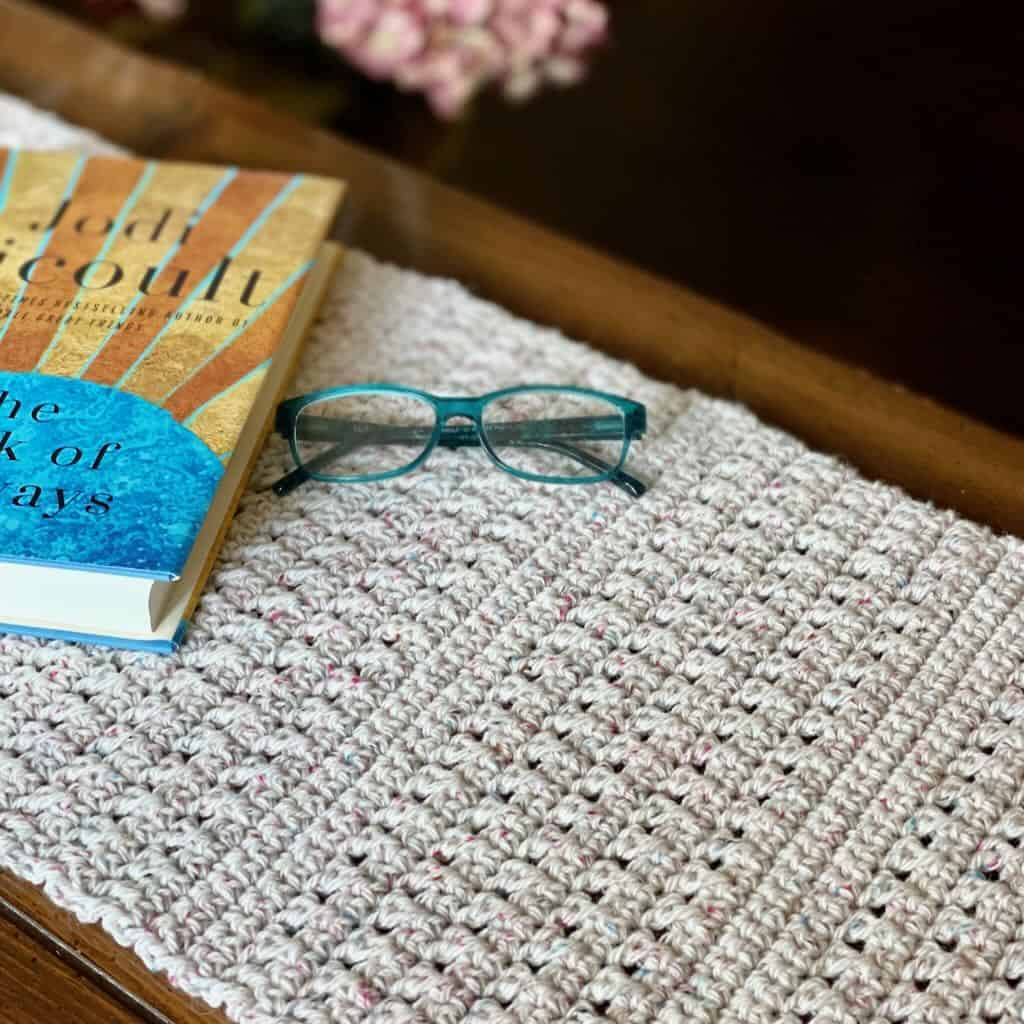
Special Stitches
Crossed double crochet (crossed dc) – Sk 1 st, dc in next st, dc in skipped st, crossing over the first dc made.
Stacked single crochet (STsc) – (This stitch is used at the beginning of a row or round to replace the traditional turning ch-3. It has the appearance of a dc.) – Insert hook in same st as loop, YO, draw up loop, YO, pull through 2 loops (bottom sc made), insert hook in left vertical bar of bottom sc, YO, draw up loop, YO, pull through 2 loops (top sc made).
Pathways Table Runner Pattern Instructions
Thank you for staying on this post and reading my patterns right here on the blog, without copy/pasting. When you stay here to follow the free version of my pattern, I am compensated for my time and energy. This is a great, free way to support a designer. If you would like to save this for later, bookmark the page to save it in your mobile browser.
Pattern Notes
- A ch-2 or ch-3 may be substituted for the STsc. Doing so will not alter the appearance or construction. However, the STsc tends to create a cleaner, straighter side edge.
- The fabric is reversible. However, the right side of the fabric is the side facing you when you work the crossed dc rows. The left dc of each pair crosses over the right dc of the pair when looking at the right side. Choose the side you prefer to be up and visible when using it on your favorite table.
Instructions
Ch 41.
Row 1: Dc in 3rd ch from hook and in each ch across, turn. (40 dc)
Rows 2-4: STsc, dc in next st and in each st across, turn.
Row 5: STsc, dc in next st, crossed dc across to last 2 sts, dc in each of the last 2 sts, turn. (4 dc, 18 crossed dc)
Row 6: Ch 1, sc in same st and in each st across, turn. (40 sc)
Rows 7-12: Rep Rows 5-6 3 times.
Row 13: Rep Row 5.
Rows 14-18: Ch 1, sc in same st and in each st across, turn. (40 sc)
Rows 19-102: Rep Rows 5-18 6 times.
Rows 103-110: Rep Rows 5-6 4 times.
Row 111: Rep Row 5.
Rows 112-115: STsc, dc in next st and in each st across, turn. (40 dc)
Fasten off and weave in all ends. Block if necessary.

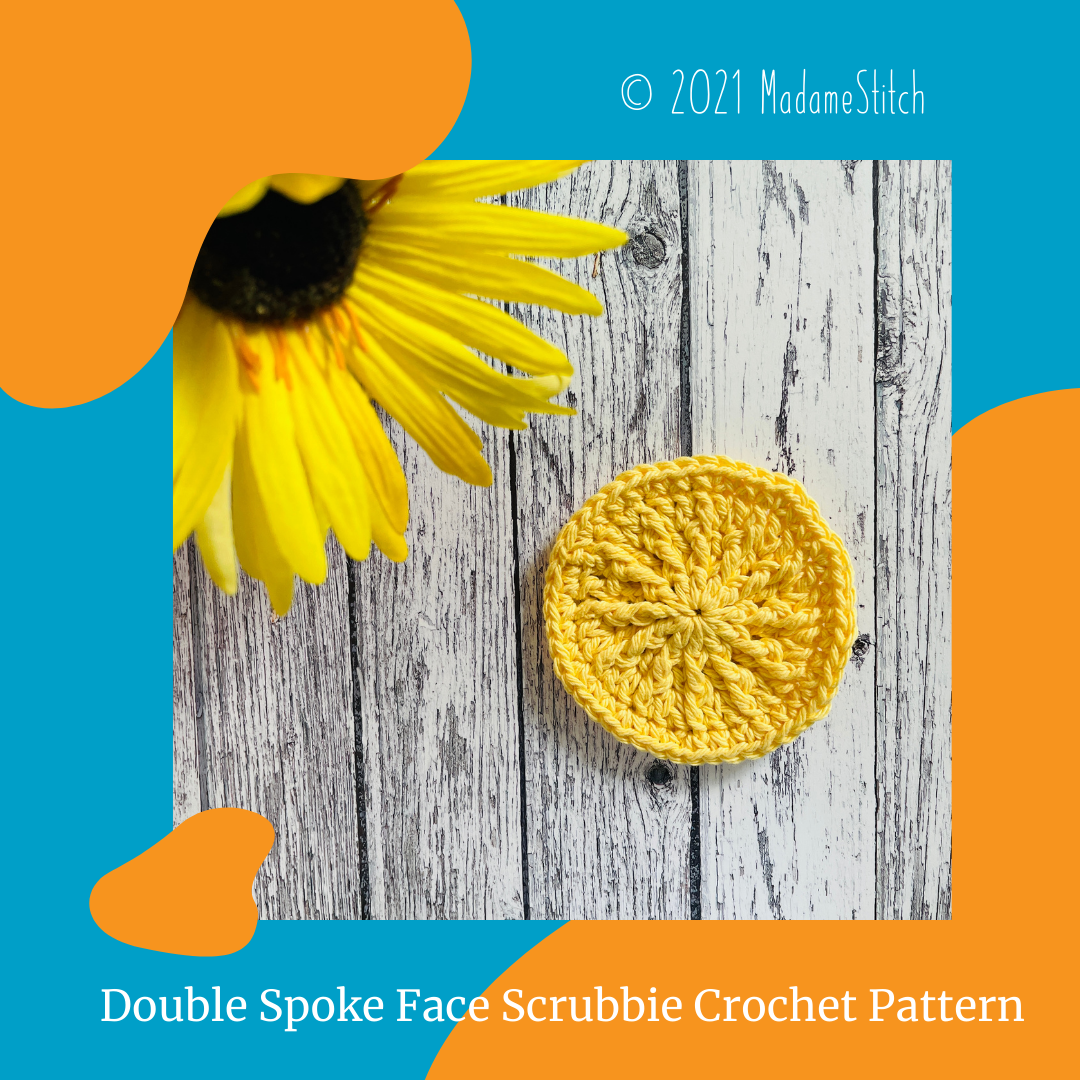
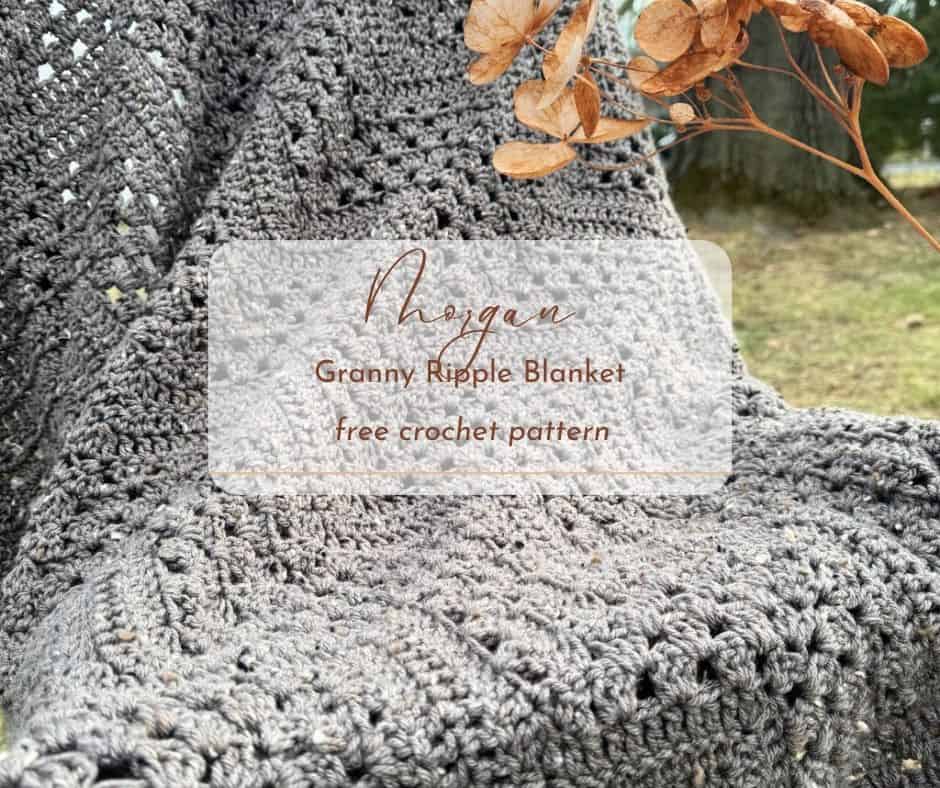
Just found your post this morning on my phone. Will look forward to seeing your other patterns.
Enjoy! Welcome to MadameStitch!
I’m loving this pattern! My question is how do I make it wider?
Emily,
Use the gauge (Stitches per 4″) to figure out how to get the width you want. As long as the stitch count is an even number, it should work.
Best,
Debbie